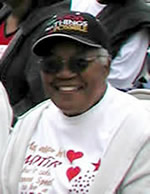 |
 |
 Once you’ve set your voter contact and turnout goals, the next step is planning how you’re going to reach them. The success of an electoral project, Henry Serrano has observed, is in part due to “an understanding of what needs to be done to reach those goals, including staff, membership involvement, funding – all these different elements.”
Once you’ve set your voter contact and turnout goals, the next step is planning how you’re going to reach them. The success of an electoral project, Henry Serrano has observed, is in part due to “an understanding of what needs to be done to reach those goals, including staff, membership involvement, funding – all these different elements.”
In other sections of the TechKit, we discuss budgeting and staffing issues. Here we’ll show you how to make projections of your volunteer labor requirements based on your voter contact targets. This will allow you to assess the capacity of your membership to reach those objectives and set volunteer recruitment goals.
While the people-power calculations are pretty precise, there is a margin of error that is minimized with experience. Over time, organizers learn what they can expect from the neighborhoods in which they do outreach – if canvassers can contact an average of ten voters per hour or if five is a better estimate, for example. In the video, Anthony Thigpenn describes the variables that organizers with SCOPE take into account when they make volunteer projections.To help guide you through the process of making volunteer projections, we’re using the “Volunteer Recruitment Template” (an interactive Zoho spreadsheet) prepared by organizers with Californians for Justice working on the “NO on CCRI” campaign, an unsuccessful bid to defeat the so-called “California Civil Rights Initiative” that ended affirmative action in the state.
Start with Assumptions
Let’s start by looking at the assumptions of campaign organizers, which you can manipulate using Excel. The first set of assumptions was used to calculate their voter ID goal. Before you can begin to make projections of volunteer requirements, you need two goals in mind: the number of voters you want to ID and the number of times you want to contact them. We covered ways of arriving at these numbers on the Targeted Turnout and Assembling a Majority pages.
The template’s first three sections (“A” through “C”) record the calculations campaign organizers did to settle on an ID goal of 7,034 voters, each contacted twice before Election Day, for a total of 14,068 voter contacts.
The second set of assumptions and their related calculations (section “D”) are about what organizers can reasonably expect from their precinct captains. Campaign planners decided that one hard-working precinct captain can reach 200 voters twice – the first, two months before the election and again a month later. How did they come up with this number? Experience; in past campaigns, they’ve found that a precinct leader can contact about 40 voters in a four-hour evening walking session, and in a steady workweek contact 200. But this is a lot to ask of volunteers, even those who are the most dedicated, and so organizers incorporated a “flake” factor of two into their calculations. What that means is that they divide all their precinct leader-projections by half, which covers a wide variety of flakiness – those who sign up to be precinct leaders and then fail to even begin the work, those who make it to contact #75 and feel like enough’s enough, those who contact all 200 voters in the first round but are unable to re-contact them in the next.
The “Flake” Factor
In section “D” they begin with calculations for an ideal world and work their way down. First, how many precinct captains they’d need to contact all 7,034 voters a total of twice; second, factoring in the “flake factor” which doubles the needed precinct captains; third, a reasonable assessment of the numbers of precinct captains they really can recruit; and finally, that “flake factor” again. What they’re left with is the power of fifteen full-capacity precinct captains and a remaining 8,068 contacts to make through phone-banking and weekend door-knocking
Campaign planners figure out how many volunteers they’ll need – both phone-bankers and canvassers – in much the same way. They work with certain assumptions – for instance, they expect that both phone-bankers and canvassers can ID an average of six voters an hour – and base their calculations on guidelines they’ve set for the campaign, like a phone-bank “slot” is two and a half hours while a canvass is three and a half. Again, they assume a “flake” factor of two. A four-week phone-banking program in which some 100 volunteers fill about 75 “slots” a week will net the campaign 4,500 contacts, which added to the contacts made by precinct leaders, leaves them still 3,568 to go. They can make those contacts with four forty-person weekend canvasses but decide to plan for five, “just in case.”
“Retail” vs. “Wholesale”
For this campaign, three-quarters of volunteers will be recruited “retail,” that is, as individuals, and one-quarter will be “wholesale,” which means that they’re members of allied or sympathetic organizations that will be recruited as a group. Some volunteers will be specifically assigned to recruiting other volunteers; planners calculate that they’ll need seven to recruit 266 “retail” volunteers. In section “H,” the actual volunteer needs are summarized and contrasted to their recruit goals, which doubles the need according to the “flake” factor. Finally, we come to the “magic number” of volunteers required by the NO on CCRI campaign: 199 actual and 398 to recruit.
So what can you take away from this process (besides the template itself)?